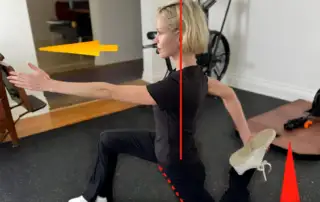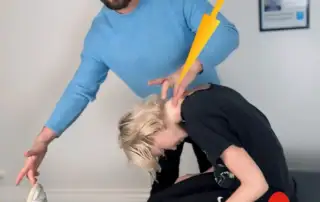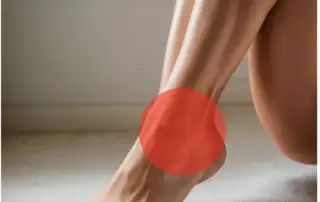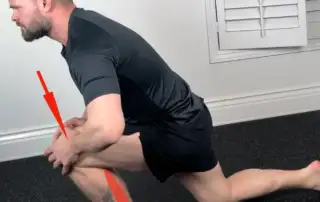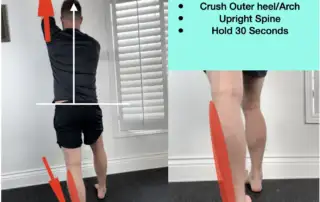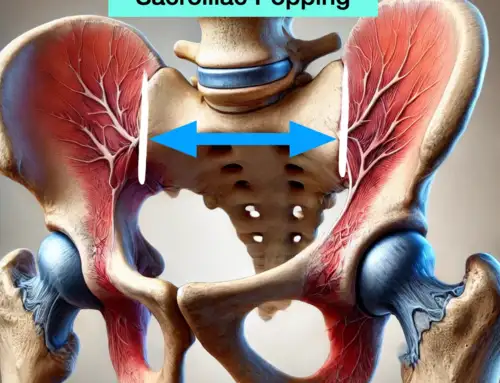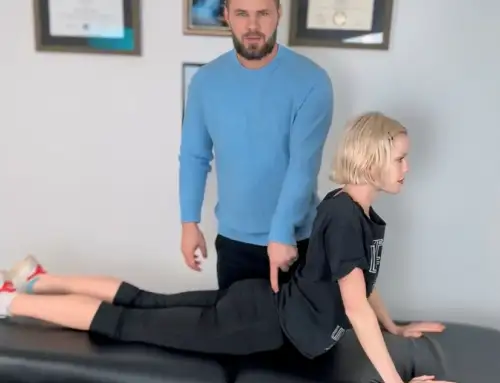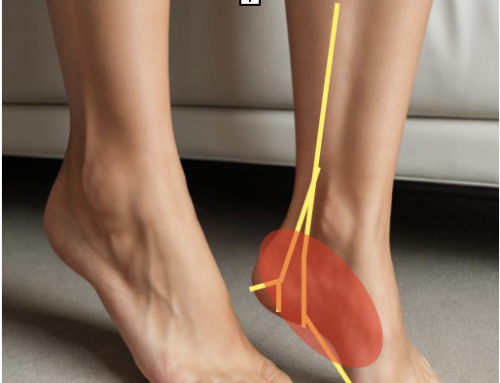Rectus Femoris Muscle Stretch: Stretch Your Hip Muscles with Ease!
How To Stretch The Rectus Femoris Muscle Comprehending [...]
Sciatica Stretches: Relieve Sciatica with These Stretching Exercises!
Stretch for Relief: Lower Back and Leg Solutions [...]
Immediate Sciatica Relief: Relieve Pain Instantly with This Treatment, No Injections Needed
Sciatica Pressure Release: Exercises and Stretch Treatment Included [...]
Outer Ankle Pain: Peroneal Tendonitis Treatment and Exercises
Outer Ankle Pain: Causes and Peroneal Tendonitis Exercises 2024 [...]
Soleus Muscle Stretch: Stretch Your Soleus Muscle with These Easy Exercises!
How to Stretch Your Soleus Muscle This muscle [...]
Gastrocnemius Muscle Stretch: Improve Flexibility with these Advanced Stretches
How to Stretch your Gastrocnemius Muscle: Best Stretches [...]
Posterior Tibial Tendonitis: Posterior Tibial Tendon, Flatfoot, and Foot Pain.
The posterior tibial tendon is a strong cable-like tissue that runs down on the inner side of the tibia, to the medial ankle and bones of the foot. The posterior tibial tendon is a vital stabilizer of the ankle and arch of the foot. Like any tendon, the posterior tibial tendon can develop tendonitis and injury. When the tendon can no longer support the arch of the foot, this is known as posterior tibial tendon dysfunction or Insufficiency.

Causes
The posterior tibial tendon is the most important tendon of the foot to maintain the arch and prevent excessive pronation of the foot during the gait cycle and during exercises. When the tendon develops tendonitis, tendinopathy, or sustained an injury the posterior tibial tendon may no longer be able to prevent the foot from collapsing down flat to the ground, this is known as the flatfoot deformity. When the patient’s foot becomes flat or develops a flatfoot deformity then is known as posterior tibial tendon dysfunction or insufficiency. This insufficiency of dysfunction of the posterior tibial tendon generally occurs from repetitive overuse in activities that require a patient to control the collapsing of the foot’s arch. Running, basketball and dancers often develop a flatfoot due to posterior tibial tendon dysfunction, due to high training demands.
Common posterior tibial tendon injury causes include:
- Inversion ankle sprain
- Eversion ankle sprain
- Poor tibialis posterior muscle strength
- Limited ankle dorsiflexion
- Tibial nerve dysfunction
- Limited big toe extension
Symptoms
Patients experiencing foot pain from posterior tibial tendon dysfunction and tendonitis notice a general flattening arch over time, known as adult acquired flatfoot. Sudden flatfoot and tendonitis can occur after a severe ankle sprain due to the damage on the tendons and ligaments on the inner side of the foot.
Common complaints include:
- Medial foot pain
- Tenderness of posterior tibial tendon
- Swelling around the posterior tibial tendon
- Foot pain worsened by activity such a running
- Some patients pain and difficultly walking and standing
- Tibial neuropathy
Recovery
Posterior tibial tendon dysfunction and tendonitis can be treated and corrected with conservative non-surgical therapy. Exercises and manual treatment combined can get an athlete or patient back to sports in just a few weeks. The speed of recovery depends on the effectiveness of the treatment program, which needs to include a “big picture” approach which includes the entire foot, lower extremity, and even core function.
Treatment
Most cases of posterior tibial tendon dysfunction don’t require surgical intervention except in the most severe patients when a patient receives inadequate physio exercises or treatment guides.
Treatment of posterior tibial tendon dysfunction must include:
- Restoration of mobility and stability of foot and ankle
- Straightening of tibialis posterior muscle
- Foot intrinsic exercises to reinforce arch of the foot
- Ankle dorsiflexion exercises
- Big toe extension mobility and strengthening
- Mobilization of the posterior tibial tendon
- Tibial nerve flossing
- Treatment of spring ligament and deltoid
- Correction of calcaneal valgus (adjustment)
Our editorial practices include evidence-based practices, interventions, and recommendations.
GET IN TOUCH WITH DR. DEAN
YOU should be able to move the way you’d like to move without experiencing pain. YOU should be able to experience freedom and energy knowing there’s nothing holding back from giving your life 110%. Dr. Dean would like to learn more about your challenges with a quick phone or email before beginning treatment. Contact him today.

